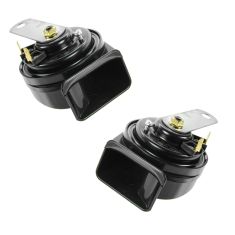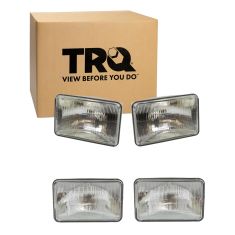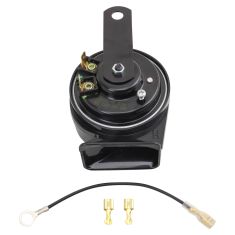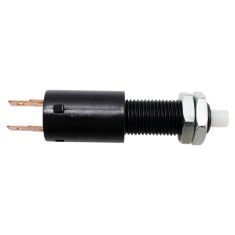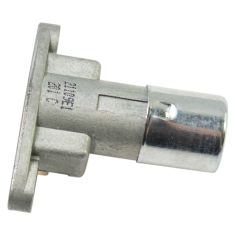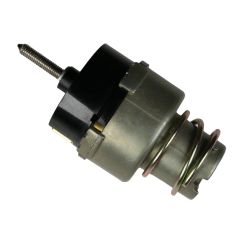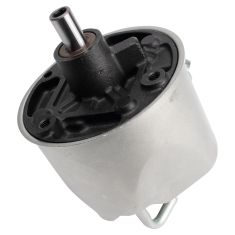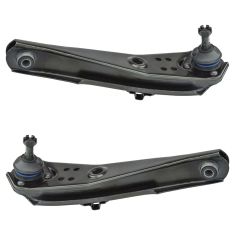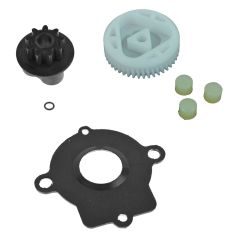Ford Ranchero
-
Notify When Available$38.95Save 24%List $50.95 Save $12.00
Replaces Ignition Control Module TRQ ICA61375
Brand: TRQ - ICA61375$38.95Save 24%List $50.95 Save $12.00 -
Notify When Available$64.95Save 18%List $78.95 Save $14.00Brand: TRQ - ELA17620$64.95Save 18%List $78.95 Save $14.00
-
Notify When Available$84.95Save 11%List $95.95 Save $11.00
Replaces 4 Piece Headlight Set TRQ LKA93536
Brand: TRQ - LKA93536$84.95Save 11%List $95.95 Save $11.00 -
Notify When Available$39.95Save 13%List $45.95 Save $6.00Brand: TRQ - ELA05003$39.95Save 13%List $45.95 Save $6.00
-
Notify When Available$19.95Save 36%List $30.95 Save $11.00
Replaces Brake Light Switch TRQ SWA41760
Brand: TRQ - SWA41760$19.95Save 36%List $30.95 Save $11.00 -
Notify When Available
Replaces Edsel Ford Lincoln Mercury Floor Mounted Headlight Dimmer Switch TRQ SWA41734
Brand: TRQ- SWA41734$18.95Save 35%List $28.95 Save $10.00Brand: TRQ - SWA41734$18.95Save 35%List $28.95 Save $10.00 -
Notify When Available$25.95Save 26%List $34.95 Save $9.00Brand: TRQ - SWA41616$25.95Save 26%List $34.95 Save $9.00
-
Notify When Available$184.95Save 22%List $235.95 Save $51.00Brand: TRQ - PSA60604$184.95Save 22%List $235.95 Save $51.00
-
Notify When Available
Replaces Ford Mercury Front Driver & Passenger Side 2 Piece Control Arm with Ball Joint Set TRQ PSA62204
Brand: TRQ- PSA62204$94.95Save 20%List $118.95 Save $24.00Replaces Ford Mercury Front Driver & Passenger Side 2 Piece Control Arm with Ball Joint Set TRQ PSA62204
Brand: TRQ - PSA62204$94.95Save 20%List $118.95 Save $24.00 -
Notify When Available$29.95Save 23%List $38.95 Save $9.00Brand: TRQ - WCA50125$29.95Save 23%List $38.95 Save $9.00
It’s a car! It’s a Truck! It’s a Ranchero!
What could be better than your favorite Ford car? What if it had a truck bed, too? That was the basic idea behind the Ford Ranchero. In 1957, the Ranchero kicked off the pickup car trend that would eventually result in the Chevy El Camino, Dodge Rampage, the Subaru Brat, and many others.
Even before the first Ranchero was built, Ford was toying with the idea of a car with a pickup bed. An Australian customer wrote to the company, asking them to build a car that could haul the family to church on Sunday, and pigs to the market on Monday. Ford responded by designing a car with a coupe body and a truck bed in 1924. This style of car became known as the coupe utility, which Australians affectionately took to calling the “ute.” Utes are still popular in Australia, although new models are no longer seen in the US.
Much like that first Ute, the Ranchero was built on the platform of a pre-existing car throughout its history. The 1957 Ranchero was built on Ford’s full-size platform, along with the Ranch two-door station wagon and the Courier sedan. It was differentiated from these models by longhorn badges, as well as, of course, the truck bed. Advertisements from the time period showed the Rancher in southwestern or ranching scenes, with the slogan “More than a Car! More than a Truck!”
Smaller, Swifter
By 1960, Americans were buying smaller cars. Imports like the Volkswagen Beetle led the way, but eventually American manufactures followed suit with cars like the Chevy Corvair and the Plymouth Valiant. Ford’s compact entry was the Falcon. The Ranchero was built on the Falcon platform during this time period. It was later moved to the Fairlane platform. The Ranchero was marketed as a submodel and the interior trim matched that of the base model.
Even with its small size, the Ranchero was a highly capable machine. It had an 800 pound load capacity and was available with engines ranging from a 144 cubic inch straight-six to a 260 ci V8. Many people bought the Ranchero to drive around their own farms and ranches. Perhaps the most famous of those customers was Elvis Presley who bought a 1967 Ranchero.
A Truck with Muscle
In 1968, the Ranchero changed platforms again. Now it was based on Ford’s Torino muscle car. The body grew slightly and so did the engines. The Torino-based Ranchero was available with engines ranging from a 250 ci inline-six all the way up to the 428 ci “Cobra Jet” V8. Now the Ranchero was good for both hauling and haulin’.
Ranching in Luxury
In the ‘70s, Ford started to introduce more stylish versions of the Ranchero. The car became wider and heavier, with a big oval grille. A sub-model, the Squire, was introduced with wood-grain side paneling. The styling and accoutrements may have changed, but it was still the same car underneath. Most of the same engines were still available.
In 1977, Ford phased out the Torino, leaving the Ranchero without a platform. It was moved again, this time to the Thunderbird platform. This completed the Ranchero’s transition towards a personal luxury model.
Replacing the Ranchero
The last Rancheros were built in 1979 with a special commemorative 1979 ½ model. In the late seventies, it seemed that the market for the pickup car was drying up. Trucks had more lenient requirements for emissions and fuel efficiency, making small trucks cheaper than coupe utilities. Small imported trucks were also becoming increasingly popular. Ford eventually entered that market with the Ranger.
Although Ford stopped selling a coupe utility in the states, it still sells the Falcon Ute in Australia. In 2014, Ford announced that it was considering bringing a compact truck to market in the US. This led some to speculate that it would be bringing a ute stateside. Whether or not that turns out to be the case, that reaction speaks to the enduring popularity of the design.

